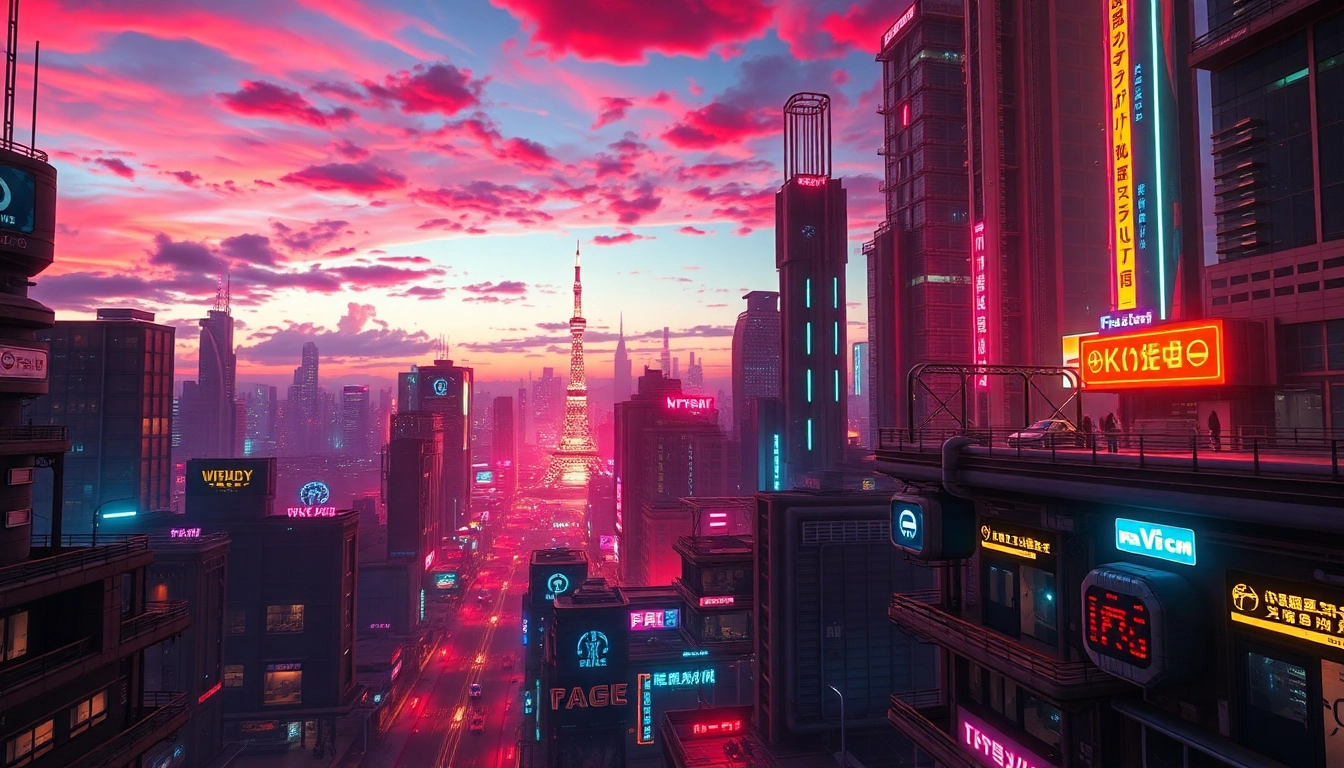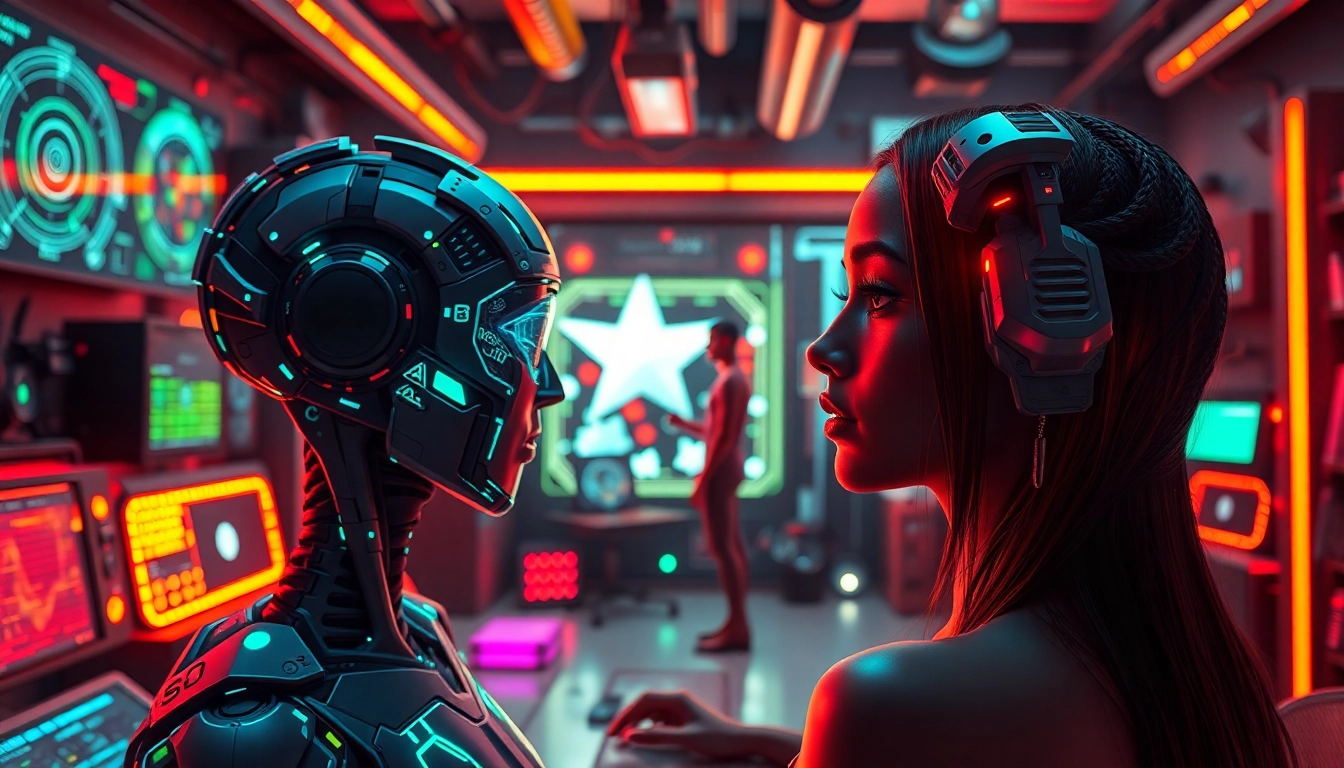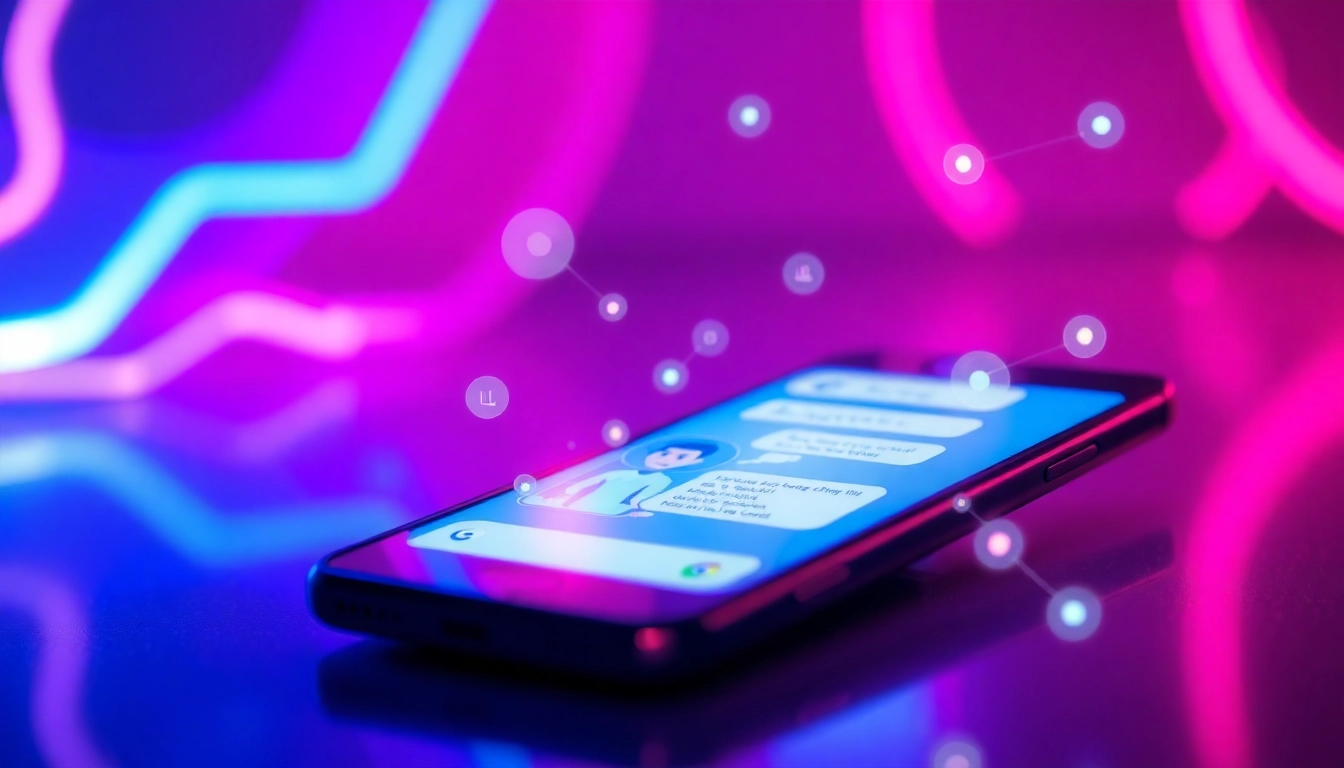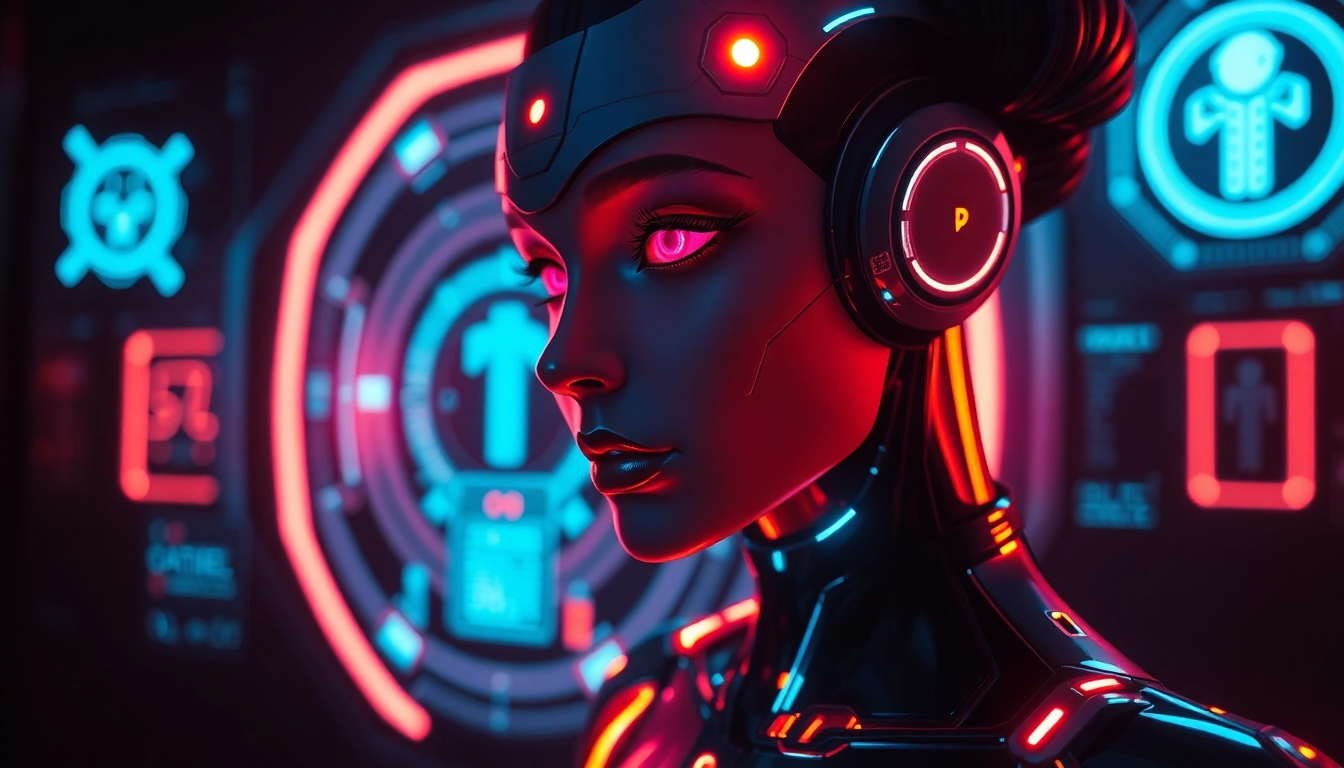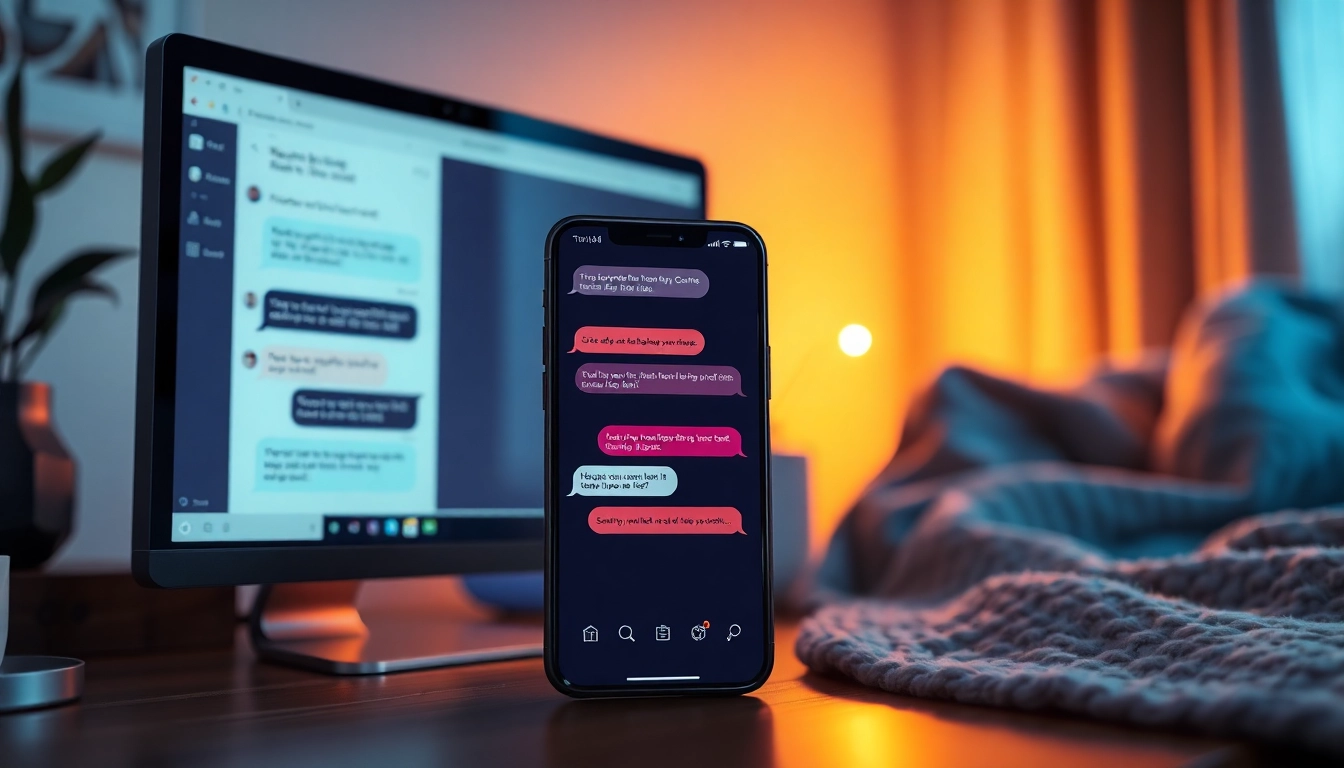Understanding the Landscape of AI Image Generators Without Restrictions
Artificial Intelligence has revolutionized creative content generation, and one of its most compelling advancements is AI image generators. These tools enable users to produce stunning visual artworks, conceptual designs, and even provocative material rapidly and with minimal effort. Particularly noteworthy are the so-called “no restriction” or unrestricted AI image generators, which permit a broader range of content, including NSFW (Not Safe For Work) material, without the conventional filters or censorship protocols. As this technology matures, understanding what defines these unrestricted platforms, their powerful features, and the associated ethical considerations becomes essential for developers, creators, and regulators alike.
For those interested in exploring the full spectrum of AI-generated visuals—ranging from delicate artistic expressions to explicit imagery—it’s crucial to find tools that offer both high flexibility and responsible governance. Discover more about this evolving landscape by visiting ai image generator no restrictions, which highlights key players and innovations in 2025.
What Are Unrestricted AI Image Generators?
Unrestricted AI image generators are platforms that do not impose strict content limitations, filtering mechanisms, or censorship layers that typically govern mainstream image models. Unlike conventional AI tools that restrict NSFW, violent, political, or controversial content, these platforms provide an open environment for users to generate any type of visual, including adult content, dystopian scenarios, and other sensitive themes. They are often built with advanced AI architectures that prioritize creative freedom, offering extensive customization options, high-resolution output, and rapid processing speeds.
This freedom to explore unfiltered creative ideas makes these tools highly attractive to a diverse user base — from digital artists and content creators to researchers experimenting with AI capabilities. However, their open nature introduces a complex interplay of innovation and responsibility, which warrants discussion on responsible usage and ethical boundaries.
Key Features That Set No-Restrictions Tools Apart
1. Deep Customization and Control
Unrestricted AI generators typically offer extensive controls over the style, realism, and output parameters. Users can craft highly specific prompts, choose different artistic styles such as photorealism or anime, and adjust aspects like lighting, background, and emotional tone. This level of customization empowers creators to tailor visuals precisely to their needs, whether for professional projects or personal experimentation.
2. High-Resolution, Rapid Output
Speed and quality are crucial in creative workflows. No-restriction platforms are optimized for fast rendering, allowing batch processing of images or videos with high resolutions—often up to 8K or higher—making them suitable for commercial use, marketing, or high-detail artwork.
3. Versatility Across Mediums and Content Types
Many of these tools support multiple content formats, including static images, animated videos, and even VR/AR assets. Their versatility enables seamless integration into various creative ecosystems, including game design, virtual production, and adult content creation.
4. Open-Source and Accessibility
Some unrestricted generators are open-source or freely available, lowering barriers to entry for hobbyists and independent developers. Platforms like Raphael AI or Dezgo exemplify free and unlimited use, fostering innovation at a grassroots level.
5. Advanced AI Architectures
The backbone of these platforms often involves cutting-edge models such as Generative Adversarial Networks (GANs), Diffusion Models, or Variational Autoencoders (VAEs), which enable more realistic and detailed outputs than previous generations.
Understanding these features helps users select the right platform for their specific needs, balancing creative freedom with technical capabilities.
Ethical Considerations and Responsible Usage
While no-restriction AI tools unlock incredible creative potential, they also pose significant ethical challenges. The unrestricted generation of NSFW or controversial content raises concerns about consent, exploitation, and the proliferation of harmful material.
Developers and users must prioritize ethical guidelines, including moderation protocols, watermarking, and usage policies that prevent misuse. Responsible use might involve restricting certain outputs when necessary, establishing accountability, and adhering to local laws and platform regulations.
Additionally, the AI community and regulators are increasingly advocating for transparency, bias mitigation, and content tracking to balance innovation with societal well-being.
For a comprehensive overview of responsible practices, explore resources like the Internet Society’s Ethical AI Frameworks or industry-specific guidelines that help navigate these complex concerns.
Top 5 AI Image Generators No Restrictions in 2025
1. Raphael AI: Fast, limitless image creation from text
Raphael AI stands out as a leader for its speed and unlimited generation capacity. It enables users to convert text prompts into high-quality images within seconds, free from sign-up requirements and usage caps. This makes it perfect for rapid prototyping, concept art, and experimentation. Raphael AI’s architecture leverages diffusion models that produce detailed, hyper-realistic visuals suitable for both artistic and commercial applications.
2. Dezgo: Versatile styles with no content limitations
Dezgo focuses on providing an all-in-one solution for generating images and videos in various styles, including anime, cartoon, and photo-realistic genres. Known for its user-friendly interface and speed, Dezgo allows creators to produce high-resolution content effortlessly, supporting multiple output formats in real-time. Its innate flexibility enables seamless integration into workflows requiring diverse visual aesthetics.
3. CGDream.ai: Imaginative visuals with advanced customization
CGDream.ai excels in rendering complex, imaginative visuals that push the boundaries of AI art. Its advanced customization features include style transfer, detailed prompt inputs, and multi-layer editing. Rated 4.9 based on user reviews, CGDream.ai offers an environment where artistic experimentation thrives, empowering users to craft surreal, dystopian, or fantasy scenes without constraints.
4. Artful Unlimited
Another notable platform is Artful Unlimited, which combines high-quality image creation with a focus on ethical freedom. It supports a wide range of content types, making it popular among digital artists, adult content creators, and educators seeking unfiltered outputs while maintaining some moderation functionalities for safety.
5. VenAI: Easy, unrestricted video and image generation
VenAI leverages diffusion and GAN technologies to produce both static images and videos from simple text prompts. Its emphasis on speed, quality, and unrestricted content makes it a preferred tool for entertainment, marketing, and adult industries aiming for cinematic visuals or dynamic content. VenAI’s intuitive interface simplifies complex generation processes, making it accessible even for beginners.
How to Choose the Right AI Image Generator for Your Needs
Filtering Features: Style, Realism, and Output Quality
When selecting an unrestricted AI generator, consider whether the platform supports your desired aesthetic style—be it hyper-realistic, cartoonish, or abstract. Check the tool’s ability to generate high-resolution outputs suitable for printing, web, or video use. A good platform will offer preview features, adjustable parameters, and consistent quality across batches.
Compatibility with Different Platforms and Workflows
Assess whether the tool integrates smoothly into your existing creative pipeline—such as Photoshop, Blender, or video editing software. Cloud-based generators like Dezgo or Raphael AI enable quick access from any device, while open-source options might require additional setup but provide greater control and customization.
Pricing and Access Options for Unlimited Use
Unlimited access can be a game-changer for professionals. Platforms like Raphael AI provide free, no-strings-attached usage, while others may offer tiered subscriptions or pay-per-use models. Evaluate your budget, frequency of use, and need for advanced features to select the most cost-effective solution.
Implementing No Restriction AI Tools into Your Creative Workflow
Best Practices for Prompt Crafting and Customization
The quality of AI-generated images hinges heavily on how prompts are structured. Be specific with descriptive language and including stylistic instructions. Experiment with different keywords, modifiers, and artistic references to achieve the desired output. Regular practice and community engagement (e.g., forums and Discord channels) can significantly enhance your prompt design skills.
Integrating Generated Images into Projects Securely
Ensure that your generated content complies with platform policies and local laws. For commercial projects, consider watermarking or licensing terms. Use secure storage solutions and backup strategies to safeguard your bespoke visuals, especially when working with proprietary or sensitive content.
Monitoring and Optimizing for Quality and Speed
Continuous review and refinement of prompts, along with hardware optimization—such as GPU acceleration—help improve both the quality and speed of output. Establish clear workflows, including batching illustrations and automating repetitive tasks, to maximize productivity.
Future Trends and Ethical Challenges of Unrestricted AI Image Generation
Emerging Capabilities and Personalization Options
As AI models evolve, expect more personalized and context-aware generation capabilities. Features like real-time editing, emotional AI integration, and multi-modal outputs (images + audio) are on the horizon, enabling even deeper customization.
Addressing Potential Misuse and Content Moderation
Unrestricted access also increases risks such as deepfake creation, non-consensual imagery, and other malicious uses. Industry leaders and policymakers are working on frameworks that balance innovation with safeguards—such as embedding traceability, watermarking, and user verification systems.
Building Responsible AI Ecosystems for Creativity
The goal moving forward is fostering communities that uphold ethical standards while exploring creative frontiers. Transparency about AI capabilities, user education, and collaborative regulation will be key to ensuring these powerful tools serve societal good without enabling harm.
